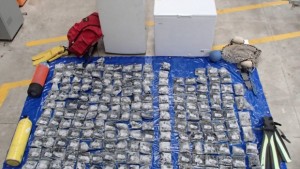One of my hockey buddies told me recently that he was offered too-cheap-to-be-true shellfish and shrimp out of a guy’s trunk a few weeks ago. He passed, not knowing where it came from or why it was so cheap.
Poaching or stealing and then selling the food on the black market raises lots of food safety questions. According to stuff.co.nz, an illegal New Zealand shellfish ring was raided yesterday.
Fishery officers have seized 116kg of illegal paua worth $15,000 in the bust of a black market shellfish ring.
According the Ministry of Primary Industries (MPI), fishery officers monitored the black market for 12 months before they moved in and seized paua, diving gear and electronic equipment across the Bay of Plenty over November 24 and 25.
During this time, it is believed 231kg of minced paua with a commercial value of $30,000 was poached and sold. It is believed 43 litres of kina were poached and sold for $3500.
The black market ring was allegedly centred on Motiti Island, off the coast of Tauranga, where divers gathered paua and kina and sold them to a network of buyers in Tauranga, Whakatane, Hamilton and Auckland.
A Tauranga food business is alleged to be involved in the sale of paua and kina.
